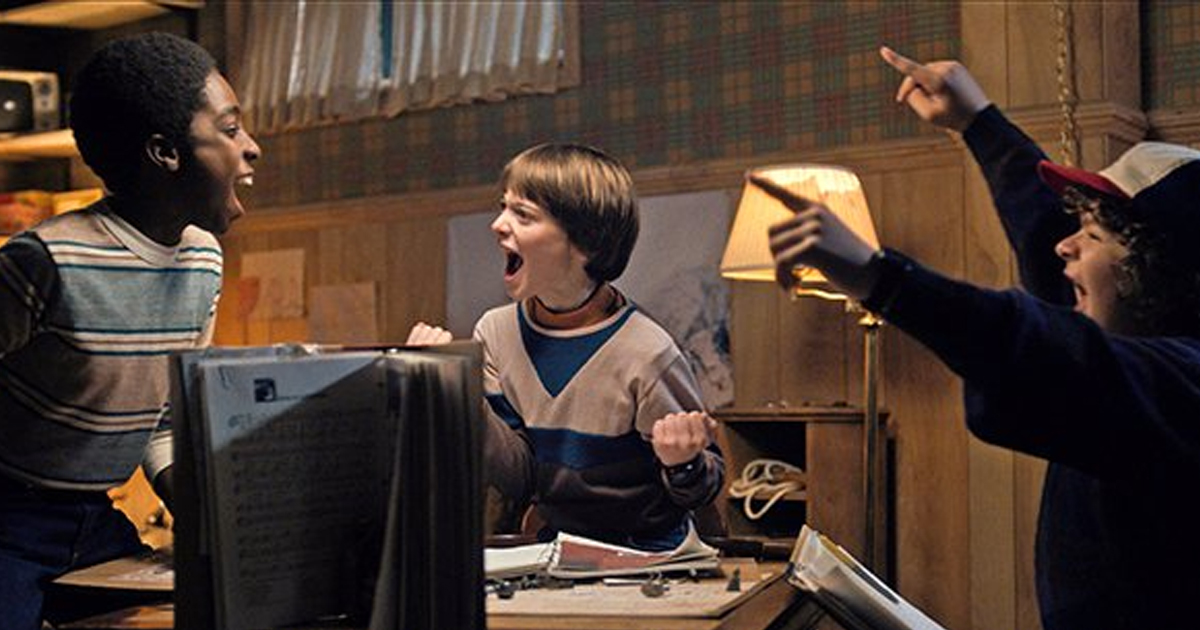So are GM Screens helpful?
History
The original DM’s Screen of the mid to late 70s was a 3 ring binder which you used to hide your maps and monster stats.

Gary Gygax and his Dungeon
Generally these could be in your lap or propped up on the table.

Stranger Things 3 Ring DM Binder
Later, D&D modules often included a cardboard map which you could pull out and use with one side as a player facing art, and the internal side being the dungeon map.
GM Screen Uses
The primary uses for a GM screen are:
- Hiding GM maps
- Hiding miniatures of upcoming monsters
- Hiding upcoming props and handouts
- Hiding GM dice rolls
- Providing a GM quick reference
I’ve done some online polling in the past, and generally what I find is that 2/3s of GMs of D&D style games prefer using a GM screen (which makes sense since they have maps and miniatures to hide), whereas about 2/3s of GMs running non-D&D style games prefer NOT to use a GM screen.
Stan’s Technique
It’s all a matter of personal preference of course, but here’s my preferences:
For D&D Style Games
I like to use a thinner version of what amounts to a 3 Ring binder. It’s a two-panel restaurant menu with inserts — art for the players side and a portfolio of clear sleeves (cut out from an art display binder) on the inside. I use it just like a 3 ring binder (in my lap or propped up on the table) but its a lot lighter.
- Hiding GM maps — I have them as an insert in the restaurant binder
- Hiding miniatures of upcoming monsters — I have a wood chest next to the GMs chair I use for that
- Hiding upcoming props and handouts — I hide these in a folder next to the GMs chair
- Hiding GM dice rolls — I usually roll in the open, or if needed, hide the roll with my hand
- Providing a GM quick reference — I have GM cheat sheets, stat blocks, and adventure notes in the two-panel restaurant menu
Another technique I’ve used is to use a traditional GM screen which GM reference notes but to lay it down on the table — essentially a placemat with a rules cheat sheet.
For Non-D&D Style Games
Usually I do the above, but with a digest sized 3 ring binder, such as my Traveller binder.
Why the smaller footprint? I like the smaller footprint (easier to see over), but whereas D&D has so many maps from modules that look best at 8.5×11″, in story games or Traveller, I don’t have to worry about large maps so I go with my preferred smaller digest size.
Conclusion
It’s all personal preferences, but those are mine! I especially don’t like having to reach over a GM screen to draw maps, and I don’t like hiding dice.



Recent Comments